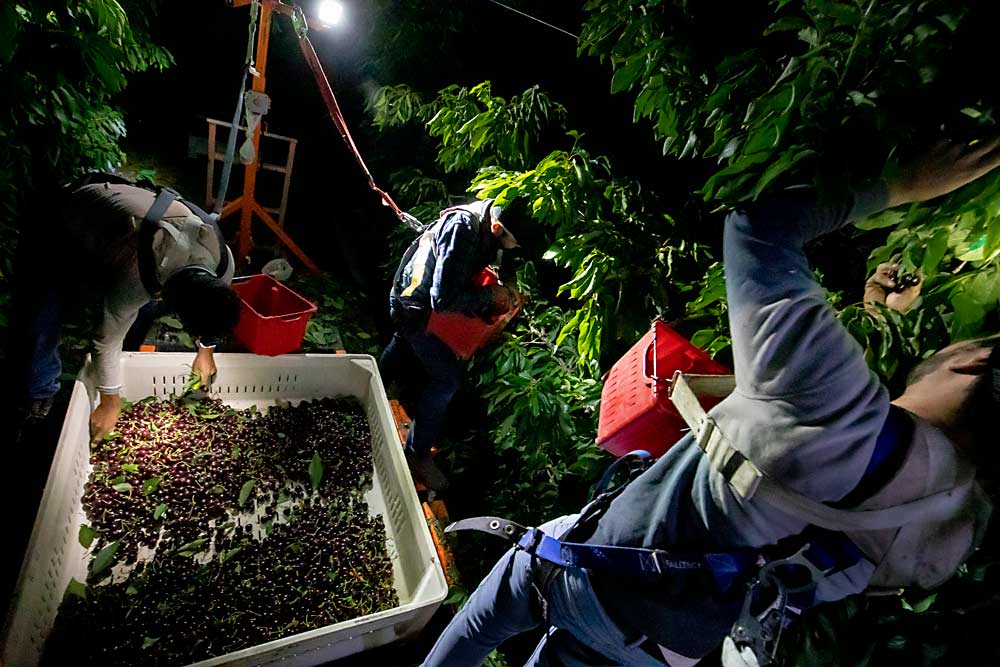
Last year, extreme heat forced some Northwest growers to pick cherries in the dead of night.
This year, many are considering doing so again, even if the temperature does not reach 117 degrees — or whatever record-breaking heat their blocks suffered. In fact, some had been talking about it for years as a way to improve worker conditions and fruit quality. Even seasonable daytime highs are still darn hot in the arid climes of Central Washington and Oregon.
“It’s sort of, ‘Why aren’t we doing this?’” said Luke Anderson, area manager for Allan Bros., a Yakima-area company that night-harvested several cherry orchards throughout Eastern Washington during the 2021 heat wave.
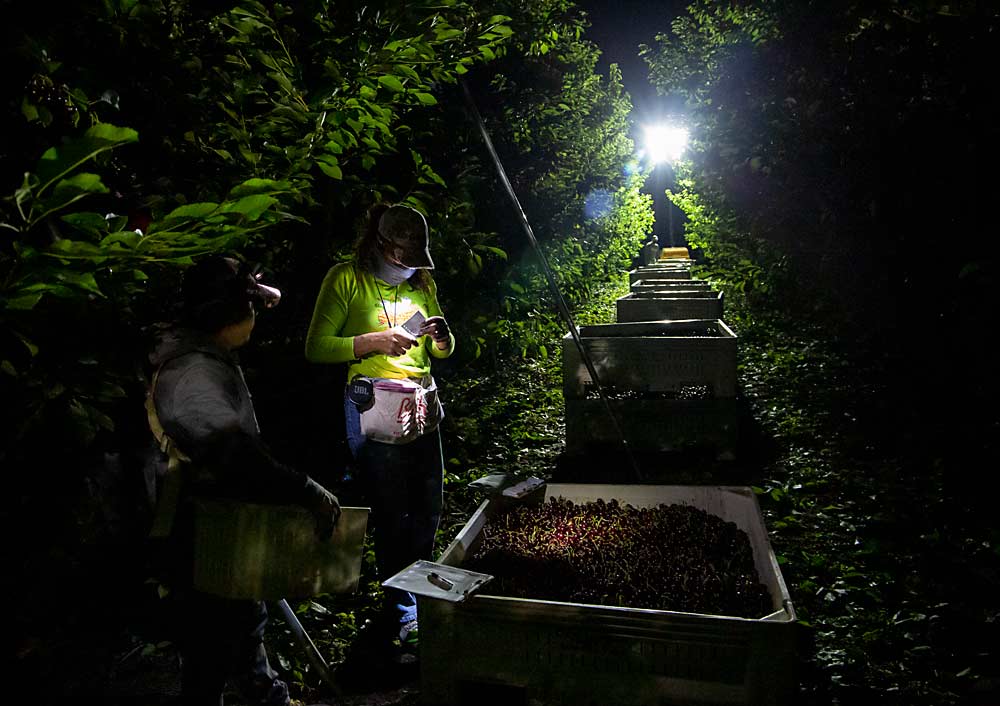
Years before, Allan Bros. managers had discussed harvesting at night to improve the cold chain for cherries, Anderson said. The company has noticed the difference in quality control metrics, such as firmness and stem retention, between cherries picked when it’s cooler versus warmer.
Last summer, the infamous heat dome that beset the Northwest with record-setting temperatures at the peak of cherry harvest — beginning in late June — forced their hand. In three orchard locations, Allan Bros. equipped about 150 workers with headlamps and turned on their platform lights.
“It was a little nerve-wracking,” said Anderson, who worked on informal, free-standing trees and not the platforms. But the workers reported they liked the night harvest: Not only were conditions more comfortable, but it offered more hours.
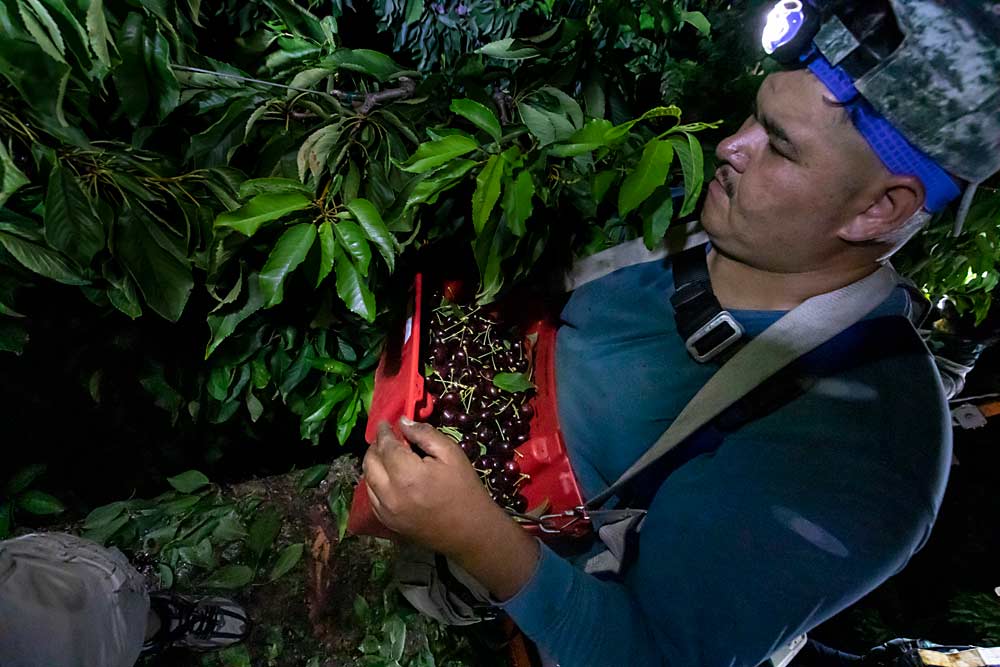
Fruit quality benefits were hard to assess because, by the time they were picked, the cherries had been exposed to several days of extreme heat, Anderson said.
He and other managers are preparing for some night harvest this year, even if just for a few hours before sunrise. They plan to take inventory of headlamps, look for bulk deals on batteries and quiz the crews on their experiences.
He would advise other growers to do the same.
“I would say do it,” he said. “If you think you can do it, do it.”
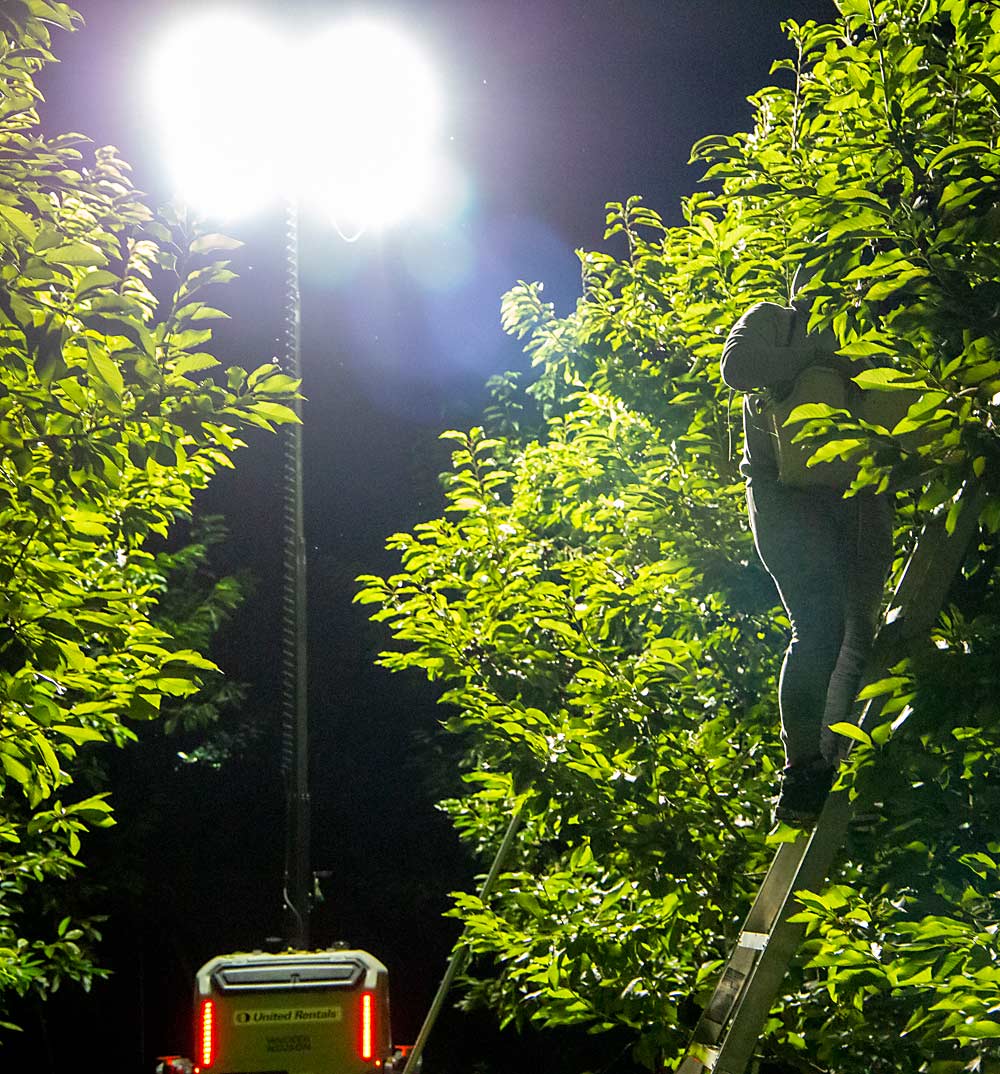
Day or night shifts both pose their own safety concerns. However, accidents and injuries did not increase among cherry pickers working at night in 2021, said Dina Lorraine of the Washington State Department of Labor and Industries.
The state has no rules about how many light towers per row pickers need, but there are workplace codes that give general rules about outdoor light — measured in foot-candles.
“While there is no specific lighting rule for growers harvesting at night, they should follow the standard for outside lighting to ensure they are working safely,” Lorraine said.
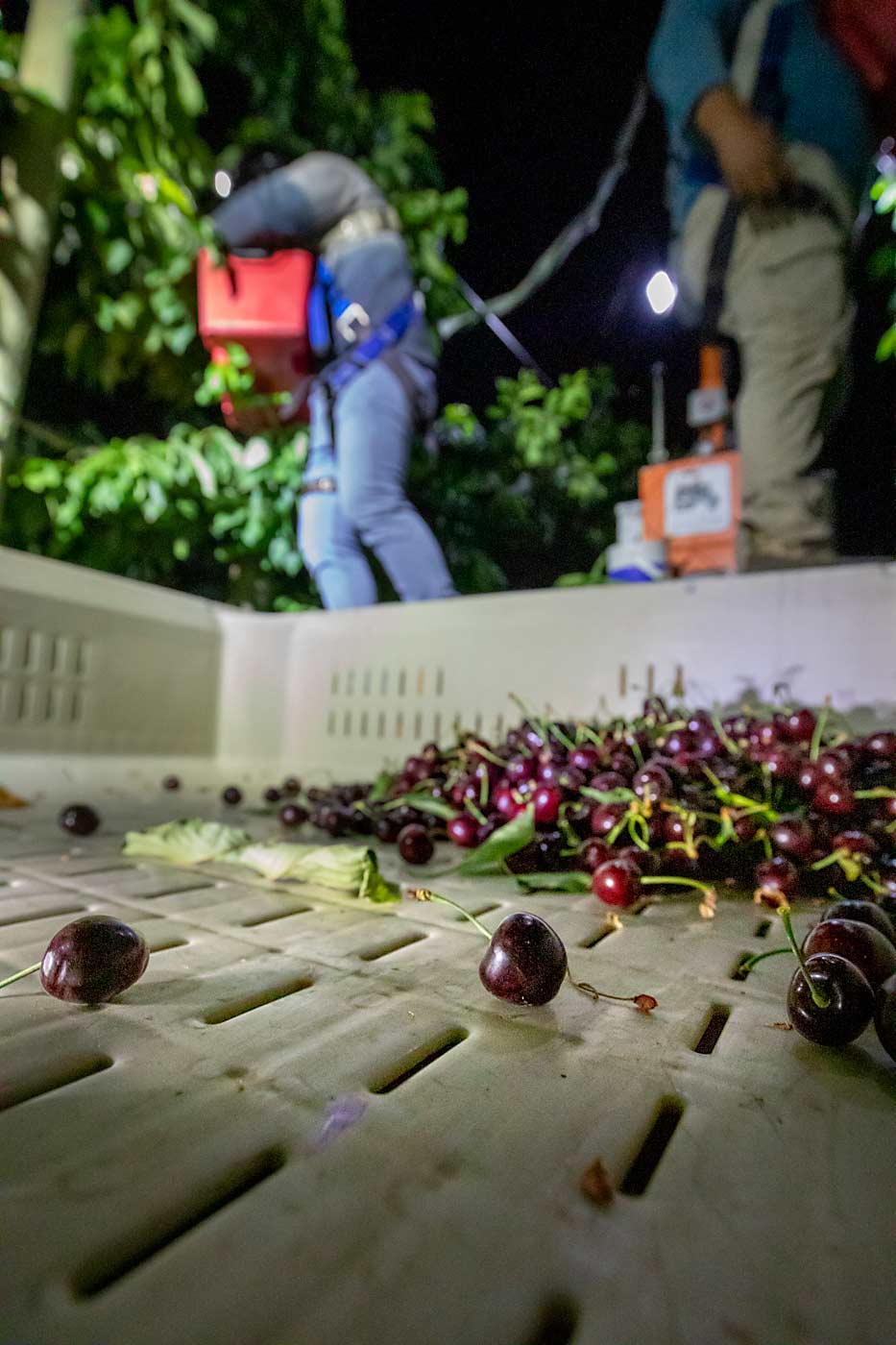
The verdict is still out on how night harvest will help fruit quality, said Matt Whiting, a Washington State University tree fruit physiologist who specializes in cherries. In an experiment several years ago, Sweetheart cherry harvest firmness did not correlate with increasing daytime harvest temperatures, he said. Stem retention didn’t correlate either.
Both findings seemed to contradict anecdotes from growers, he said.
However, his team did not test fruit under the extreme temperatures presented in 2021 and did not harvest with commercial practices, he said. His crews picked fruit each hour from 5 a.m. to 2 p.m., with temperatures from 50 to 80 degrees Fahrenheit.
Pickers liked it
At G2 Orchards near Mattawa, Washington, workers requested the nighttime harvest in 2021 and may do so again, owner Dale Goldy said. Supervisors are waiting to see how conditions play out before making up their minds.
“I am expecting that the pickers will want to,” Goldy said.
In British Columbia, about 25 percent of the growers who market with Consolidated Fruit Packers harvested at night in 2021, said Seradaye Lean, a field service representative, and many more are preparing to do so again this year, now that the boundary has been broken.
Victor Bueno, a farm manager for Washington Fruit and Produce Co., also might harvest some at night again this year.
Daylight is better, said Bueno, the manager of Washington Fruit’s Plymouth orchard, located west of Kennewick near the Columbia River. But with a year of nightshift experience under the collective belt of his 100-person crew, Bueno knows they can do it again if conditions and timing warrant the effort. For example, he could start a crew at 2 a.m. or 3 a.m. to eke out a few extra hours of work. A few hours with a crew of 100 people could mean harvesting a sensitive variety at premium maturity instead of too late.
Also, his workers told him they liked the night shift, he said. Some had experience with it at row crop farms in the area. It beat working under the heat, they told him, though they would have preferred more advance notice. Some of them struggled to find child care at the last moment, he said.
Cherry pickers usually start as soon as they can see, because even typical summer temperatures of 90 degrees or so become uncomfortable. But early morning offered little respite in 2021. Bueno’s truck thermometer registered 86 degrees at 8 a.m. at his 670-acre orchard. The daytime high climbed to 117.
So, he and his supervisors spent a day and a half planning their night assault. In hindsight, he wishes he had planned more.
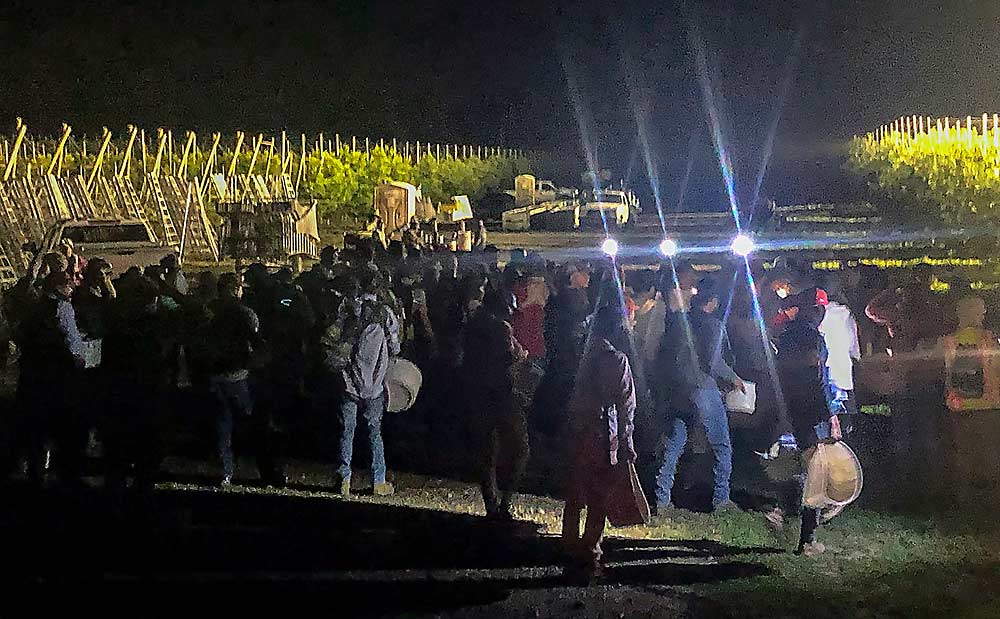
“It’s a completely different world when we were working at night,” he said. “It was my first time, and it can get complicated.”
He spent a good chunk of that brief planning time begging, pleading and cajoling equipment companies in the Tri-Cities and Hermiston, Oregon, to rent him light towers. He ended up with eight towers but could have used another four or five. Someone from Washington Fruit’s main office in Yakima found headlamps for all his pickers.
Bueno also wishes his supervisors and tractor drivers had spent more time flagging trees for pickers to skip or to harvest only partially. Encumbered by darkness, his workers continued to fill buckets at their normal pace, but packouts from the nighttime harvest dipped by roughly 5 percentage points, Bueno said.
Other hiccups included headlamp batteries running out and having to swap headlamps between pickers and drivers.
But those problems are avoidable with a year of experience behind them, he said.
“If we fix those little annoying things … I think we can be more prepared,” he said.
—by Ross Courtney
Experience sheds light on successful harvest in the dark
Victor Bueno, a farm manager for Washington Fruit and Produce Co., shared tips for nighttime cherry harvest in January at the 2022 Cherry Institute. Some lessons came in hindsight from his first foray into night harvest during the record-breaking 2021 heat wave.
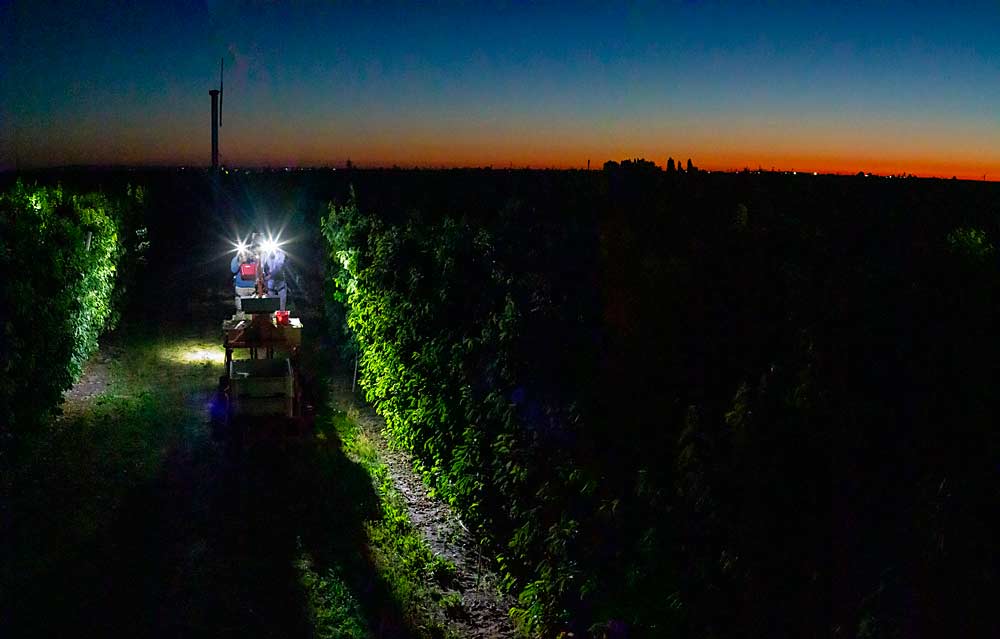
“It was a first-time experience, and we learned a lot,” he said. Here are a few tips he shared:
—Check the weather forecast, not just for the week but long-range predictions.
—Start planning early. Bueno rallied his crews within a day and a half and wished he’d spent longer planning.
—Clearly flag blocks for skipping or choice picking. His crews picked more than their usual share of culls because they couldn’t see well enough to make the decisions at night.
—Order enough headlamps for every worker. Bueno “robbed Peter to pay Paul” at times, shuffling headlamps from tractor drivers to other workers.
—Keep extra headlamp batteries on hand.
—Start calling early to procure enough light towers. He ended up with eight and could have used four or five more.
—Station one light tower for every three rows. Bueno did a 1–4 ratio in 2021 because his crews are used to working four rows at a time, but the light did not cast far enough.
—Test light towers before relying on them, to make sure they work and provide enough light.
—Keep extra diesel handy for light towers.
—Station extra tractors to move towers as pickers progress.
—Line up trucks and truckers ahead of time. Just because pickers want to work at night doesn’t mean truckers do.
—R. Courtney

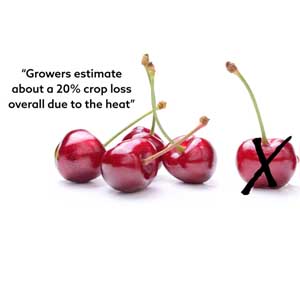
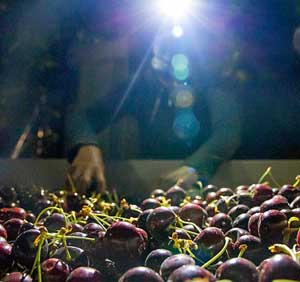
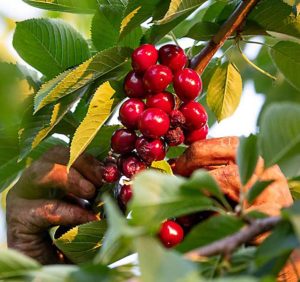





Leave A Comment